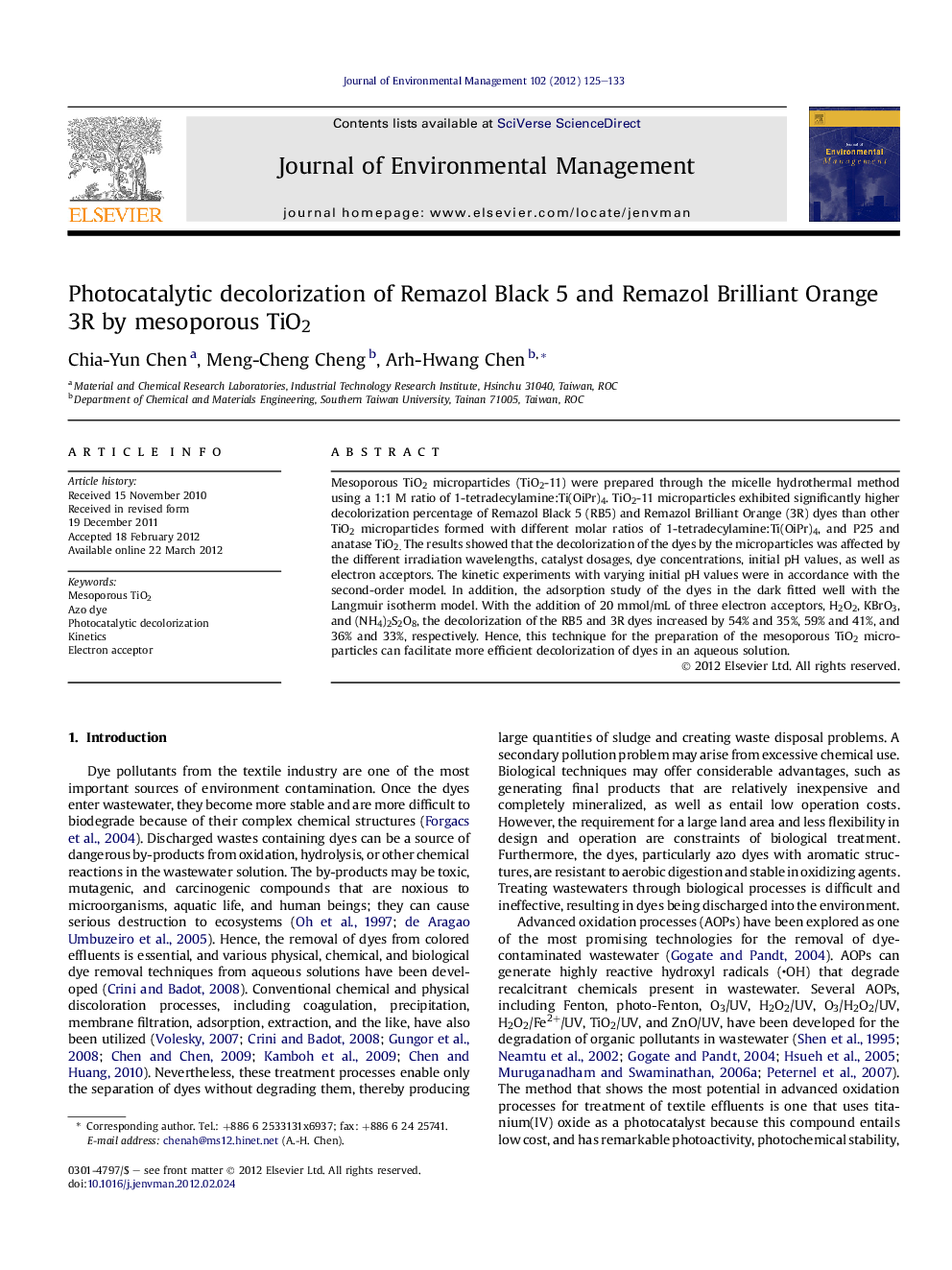| Article ID | Journal | Published Year | Pages | File Type |
|---|---|---|---|---|
| 1056820 | Journal of Environmental Management | 2012 | 9 Pages |
Mesoporous TiO2 microparticles (TiO2-11) were prepared through the micelle hydrothermal method using a 1:1 M ratio of 1-tetradecylamine:Ti(OiPr)4. TiO2-11 microparticles exhibited significantly higher decolorization percentage of Remazol Black 5 (RB5) and Remazol Brilliant Orange (3R) dyes than other TiO2 microparticles formed with different molar ratios of 1-tetradecylamine:Ti(OiPr)4, and P25 and anatase TiO2. The results showed that the decolorization of the dyes by the microparticles was affected by the different irradiation wavelengths, catalyst dosages, dye concentrations, initial pH values, as well as electron acceptors. The kinetic experiments with varying initial pH values were in accordance with the second-order model. In addition, the adsorption study of the dyes in the dark fitted well with the Langmuir isotherm model. With the addition of 20 mmol/mL of three electron acceptors, H2O2, KBrO3, and (NH4)2S2O8, the decolorization of the RB5 and 3R dyes increased by 54% and 35%, 59% and 41%, and 36% and 33%, respectively. Hence, this technique for the preparation of the mesoporous TiO2 microparticles can facilitate more efficient decolorization of dyes in an aqueous solution.
► TiO2-11 photocatalyst is prepared through the micelle hydrothermal method. ► TiO2-11 photocatalyst has larger surface area and higher decolorization of azo dyes. ► The decolorization is affected by the catalyst dosages, dye concentrations, and pH values. ► The decolorization is significantly enhanced by the addition of electron acceptors.
